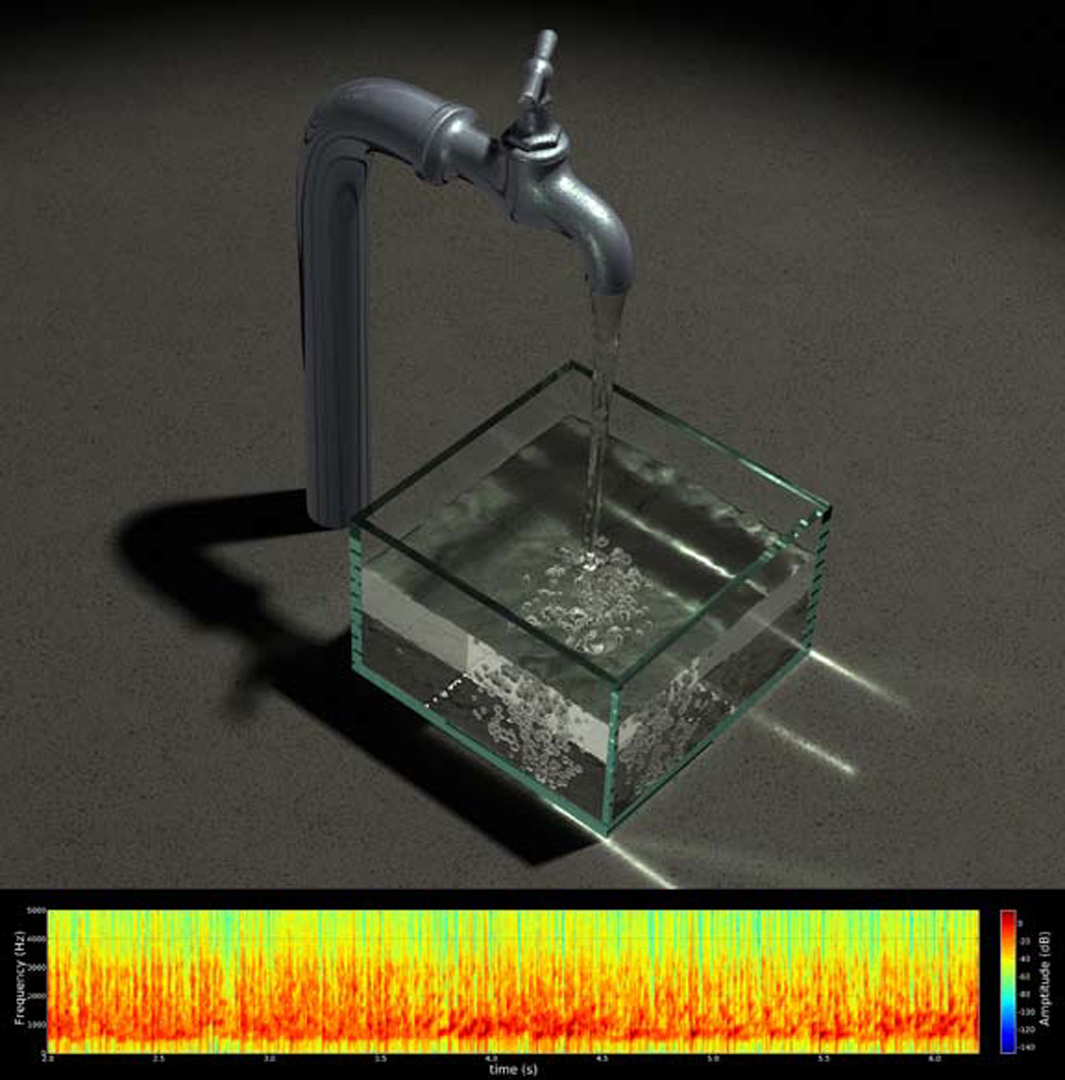“Harmonic Fluid Sound Synthesis” by Cornell University
Conference:
SIGGRAPH Video Review:
Track:
- 17
Title:
- Harmonic Fluid Sound Synthesis
Director(s):
Company / Institution / Agency:
- Cornell University
Description:
This research animation demonstrates 3D fluid simulations with synchronized procedural fluid sounds (of dripping, pouring, splashing, and babbling water) that were synthesized by our physically based Harmonic Fluids sound-radiation algorithm [Zheng and James, 2009].
Sounds, such as splashing and pouring, are ubiquitous and familiar, but we lack physically based algorithms to synthesize them in computer animation or interactive virtual environments. This animation highlights research on the first fluid sound synthesis results for computer animation. In our related SIGGRAPH 2009 Technical Paper [Zheng and James, 2009], we proposed a practical method for automatic procedural synthesis of synchronized, harmonic bubble-based sounds from 3D fluid animations. To avoid audio-rate time-stepping of compressible fluids, we acoustically augment existing incompressible fluid solvers with particle-based models for bubble creation, vibration, advection, and radiation. Sound radiation from harmonic fluid vibrations is modeled using a time-varying linear superposition of bubble oscillators. To realistically model radiated fluid sound fields, we weight each oscillator by its bubble-to-ear acoustic transfer function, which is modeled as a discrete Green’s function of the Helmholtz wave equation. To enable parallel solution of millions of 3D Helmholtz problems, we propose a fast dual-domain, multipole boundary-integral solver, with cost linear in the complexity of the fluid domain’s boundary. Our animation demonstrates examples of harmonic fluid sounds for water drops and pouring, babbling, and splashing phenomena, often with thousands of acoustic bubbles and hundreds of thousands of transfer-function solves.
Hardware:
Parallel simulation of simultaneous fluid animation and sound radiation required several hours (see Zheng and James, 2009) on a Beowulf cluster comprised of 160 Intel Xeon processor cores running RedHat Linux.
8-Xeon-core Apple MacBook Pro running Mac OS X
Software:
The project used custom software for particle-based level-set liquid simulation, robust least-squares Helmholtz solvers for estimating wave radiation, and auralization of 3D fluid sounds. Final frames were rendered using Pixar’s RenderMan. Video editing was enabled by Adobe After Effects
Additional Contributors:
Director: Changxi Zheng
Producer: Doug James
Research & Development: Changxi Zheng and Doug James
Acknowledgements: The National Science Foundation, (CAREER-0652597, HCC-0905506) Alfred P. Sloan Foundation, Pixar Animation Studios, Intel Corporation, Autodesk Maya




